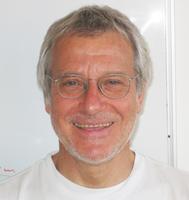Wolfpack pursuit
Meir N. Pachter – Department of Electrical & Computer Engineering, Air Force Institute of Technology, United States
Pursuit-evasion differential games in the Euclidean plane where an evader is engaged by a team of pursuers and point capture is required will be discussed.
The players have simple motion a la Isaacs/are holonomic and the pursuers are faster than the evader. We confine our attention to the case where the pursuers have the same speed, so the game's parameter is the evader/pursuers speed ratio mu < 1 . State feedback capture strategies and an evader strategy which yields a lower bound on his time-to-capture are devised using a geometric method. It is shown that in group/swarm pursuit, when the players are in general position, capture is effected by one, two, or by three critical pursuers, and this irrespective of the size N (>3) of the pursuit pack. Group pursuit devolves into pure pursuit by one of the pursuers or into a pincer movement pursuit by two or three pursuers who isochronously capture the evader, a menage a trois. The critical pursuers are identified.
However, these geometric method-based pursuit and evasion strategies are optimal only in a part of the state space where a strategic saddle point is obtained and the Value of the differential game is established, and as such, are suboptimal. To fully explore the differential game's high dimensional state space and get a better understanding of group pursuit, numerical experimentation is undertaken. The state space region where the geometric method-based suboptimal solution of the group pursuit differential game is the optimal solution becomes larger the smaller the speed ratio parameter is.
Free entrance.
Welcome to everyone!
Location
CIM
McConnell Building
McGill University
Montréal QC H3A 0E9
Canada


